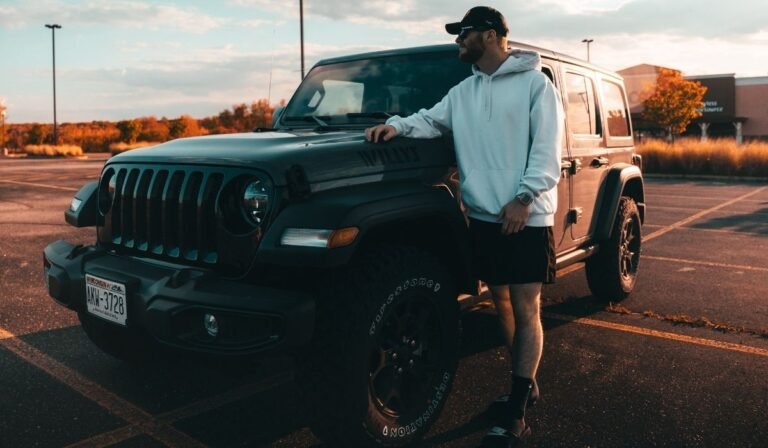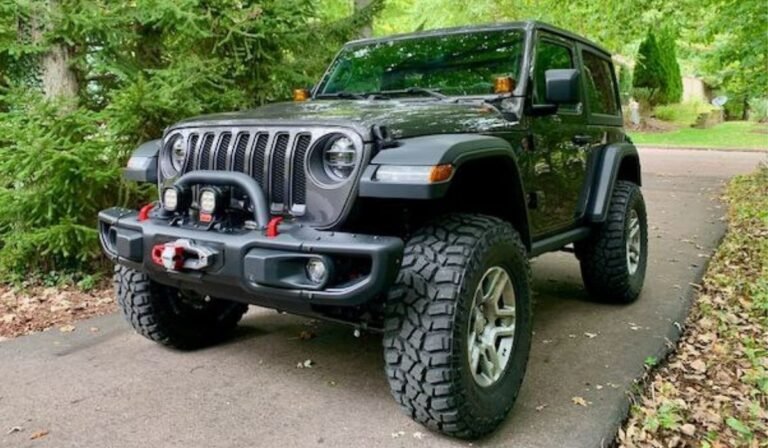Buying high mileage jeep wrangler 100k – 300k miles is it worth it?
You can buy Jeep Wrangler from the market, whether new or used, and you find that there are some good options to choose from regardless of whether they are new, slightly used, or have been used for a long time.
In the car market, you’ll find cars in all conditions. It is up to you to choose whether buying high mileage jeep wrangler is worth it or not but don’t forget to put perspective into two main things, price and the condition of the car.
Yes, you can buy high mileage Jeep from 100k to even 400k miles. But on certain conditions like it has to be bone stock. The less the modified the better. It mainly applies for first time jeep owners as they don’t have much knowledge about what’s been modified and what it might cause after you buy it. Make sure to look for history of maintenance, damages, etc.
When you are buying a new or slightly used jeep wrangler, you expect the mileage to be zero or very low and that the car is in very good condition, so what you will check is any extras that you want in your wranglers such as heated seats, a spare tire carrier or sometimes some sellers through some aftermarket extras such as roof racks and bigger tires.
Are high mileage wranglers bad?
Suppose you are in the market for a wrangler. In that case, you’ll notice that some wranglers have very high mileage figures, and you automatically think they might have issues.
This is probably true, but it all depends on the previous owner and if the car had been previously inspected before it was put up for sale.
You might see some options that interest you, and you might be willing to buy immediately, but you should not. The information on the sale details should not influence you to immediately start looking for cash to buy one.
In fact, you should start planning on how you will inspect the wrangler yourself or entrust the help of a mechanic who will help you inspect the wrangler.
Some wranglers might have high mileages and still be in good condition provided that they have been maintained properly and every repair and replacement has been done at the time of sale.
Most owners selling their wranglers will present maintenance documents. Suppose there have been any component replacements or upgrades done to the wrangler. In that case, they will list it on the sale information or provide you with a list when you view the wrangler.
Some owners spend a lot of time driving their wranglers, and they’ll maintain them accordingly. Most have specific maintenance schedules for their wranglers, and if something goes wrong, it is sorted before it gets worse.
You might get a good deal on a wrangler with some aftermarket components such as larger wheels, lift kits, better tires that are hard to find and expensive to buy which is one of the biggest advantages of buying a used wrangler.
A jeep wrangler with high mileage and minimal modifications shows that it has been driven mainly on paved roads and maybe some slight off-roading if it has all-terrain tires and some mild off-road modifications.
Such wranglers have most of the factory components. They are most likely in good condition if they are serviced well. Jeep assures a buyer of lifetime use for some components such as the engine, transmission, driveshafts, and axle shafts.
But if the wrangler has some heavy modifications such as a lift kit, winch, off-road tires and rims, aftermarket front and rear bumpers, and some MOLLE storage equipment, it has been used off-road intensively.

Some factory components might have been removed and replaced with better components such as aftermarket driveshafts, axle shafts, gear shifter if the wrangler has a manual transmission, air intake system, braking system. The engine might be tuned for more power output.
What to check for in a high mileage wrangler?
The asking price and the spec sheet of the wrangler might be tempting, but you don’t just pay and drive off. Some sellers might accept your offer immediately but inspect the wrangler thoroughly.
Whether the wrangler has been used offroad or on paved roads, some spots wear and tear on every wrangler you check for.
- Exterior condition
The first appearance of the wrangler is what you’ll notice first when you view it. Inspect all the body panels while feeling the surface.
If the paint feels thick, the wrangler has been resprayed, and there might be a risk of surface rust underneath the paint. You’ll have to ask the reason for repainting and how long ago the body was repainted.
If somebody’s panels appear to have a brighter color than others, they have probably been replaced or fixed after an accident.
Such panels will appear misaligned with other panels, especially if you look at the wrangler from the front or the rear.
Check the condition of the headlights, taillights, and signal lights. They might need some cleaning or replacing if they are dim. Inspect all the windows for cracks and dents, including the side mirrors, front windshield, and rear windshield.
Most buyers forget to check the roof, and it might be discolored since it is constantly exposed to the sun. Check every little detail on the exterior that is faulty or might lead to future replacements or repairs.
- Interior
Remove the floor mats and check the floor for rust and holes, which is a red flag for rust and holes on the floorboards. The condition of the seats, roof, roll cage, interior door panels, and dashboard.
Replacing the dashboard isn’t cheap, so you should check it carefully for cracks, but it is not a major issue if the color is faded.
Test all the switches on the doors, door locks, and handles. The dashboard, steering wheel, and center console switches should be working. They operate functions you cannot drive without, such as the AC and the windshield wipers.
Check if the doors and windows close and open completely. If they don’t, it shows signs of misuse or has been previously removed and installed wrongly. You can ask the seller to remove the top of the wrangler to inspect it from the ground since some issues can’t be seen when the top is on.
- Check the condition of the frame
The frame is the supporting structure of the whole wrangler, and it has a fault you should withdraw your offer. Any slight dent or crack on the frame indicates future troubles, especially if you use the Wrangler off-road.

As you drive over obstacles and bumps, the frame will flex, and the weak points created by the cracks and dents will get worse, thus causing the frame to break.
Check the frame from underneath using a flashlight. If it’s painted, feel through the paint for dents and cracks. Painting is one of the methods for rust protecting the frame and shouldn’t be that big of an issue.
If you notice any issue with the frame, back off from the deal but at the same time without being rude to the seller.
- Inspect other components underneath
While still underneath the wrangler, you can check the condition of major parts of the drivetrain, such as the axles, axle shafts, driveshafts, differential box, and CV joints.
Like the frame, visible cracks and dents on such components are a red flag. But what most owners do is that they reduce the price, offer to repair such issues, or throw in replacement parts as part of the deal.
Check the suspension parts visible for rust, cracks, and dents. For a better diagnosis, you’ll have to test drive the wrangler.
If there are any leakage patches underneath the car, they might be from various sources. The following is a guide to identify the source of the leak.
- Clear fluid is either from the AC system after water has condensed or from the windshield water fluid. After both have been used for a while, water patches are not an issue.
- Brown or black fluid- This shows that there is oil leaking from the engine, and you should check the source where it is leaking from since this is a major issue.
- Red or brown fluid- Automatic wranglers tend to have transmission leaks that are red in color. It can also be a power steering fluid that is mostly red or brown in color.
- Coolant leaks can be found in various colors, including yellow, green, and red. If there is leakage at the front, it mostly indicates a coolant leak from the radiator or the coolant pipes.
- There are liquid patches on the tires from the inside or on the ground. It indicates a leak in the brake fluid lines.
- Inspect the engine bay
Use the rule of thumb when checking the engine bay. If it is clean, it implies that the engine has been well maintained, but this does not mean that you ignore checking for leaks.
Check the air filter and the air filter box, oil levels, start the engine, and listen for any weird noises. You are more likely to notice leaks easier after the engine has been left running for a while.
- Verify the car’s documents
Running the VIN online should provide you with all the necessary details on the car, such as the engine type, year of manufacture, insurance claims, ownership, and service history.
Details provided by the VIN search should be the same as the seller’s information on the sale ad. If this is not the case, it is advisable to withdraw your offer.
- Test drive
This is what reveals the condition of the wrangler. By test-driving, you can listen for any sounds and vibrations coming from the suspension and drivetrain, especially when cornering, going over bumps, accelerating, and when braking.
Such issues are normal because the wrangler has been in use for a while, but if they are loud and irritating, it shows that something needs to be serviced, repaired, or replaced.
Suppose the engine takes a while to start and accelerate. In that case, the alternator is faulty, or the engine might not be getting enough fuel due to a clogged fuel filter.
A clogged air filter could also lead to this as it prevents enough air from getting into the engine. Listen for any grinding sounds when changing gears. The least that you can expect is a faulty shifter that needs replacing.

Grinding noises from the heart box shows that the transmission is due for a service or the transmission oil is low and needs to be refilled.
Rattling noises coming from the cabin or from the exterior means loose panels that need tightening, but this is not a major issue as it is common in all used cars.
Conclusion
If you are looking to buy a jeep wrangler on a budget, buying a used one is better than walking into a dealership and buying one on monthly payment terms. You might get a better wrangler with everything that would have cost you more if you opted for factory options on a new jeep wrangler.
Since jeep wranglers have a ton of upgrades and modifications that can be done on them, most owners rarely keep their Jeep wrangler’s stock. These upgrades cost a lot, and if you find a wrangler which already has them, you got yourself a bargain.
Some owners throw in some parts that they have lying around if they are not planning on getting another wrangler, which is also a plus. Also, you’ll get parts such as spare tires, wheels, drivetrain, and suspension spares.







